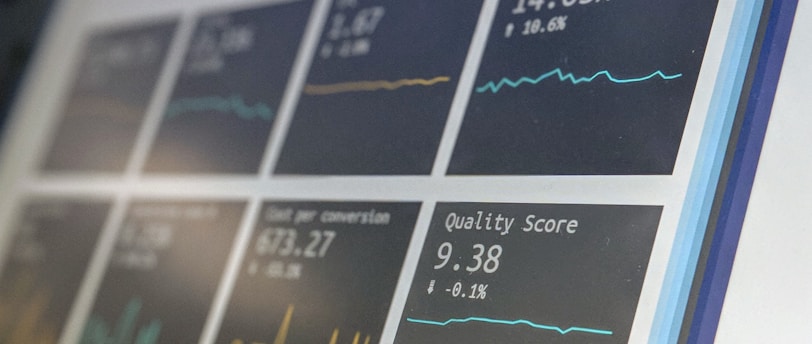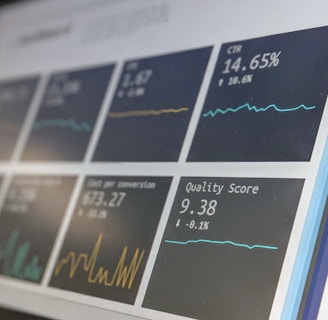6 Unique Ways to Use AI in Data Analytics
Artificial Intelligence (AI) is no longer just a buzzword—it’s becoming a cornerstone of modern data analytics. But how does AI actually help analysts work smarter? In this article, we’ll explore six unique ways to use AI in data analytics that go beyond the basics. These techniques are built around widely-used tools and can be implemented quickly in real-world data projects. Let’s dive in.
4 min read


What is AI in Data Analytics?
AI in data analytics refers to applying machine learning (ML) and automation technologies to extract deeper insights from data. It empowers data professionals to analyze massive datasets, spot patterns, and make faster decisions—with minimal manual effort.
At its heart, AI brings precision, speed, and scale to the analytics process.
Why AI Matters in Data Analytics
Let’s explore some game-changing benefits AI brings to analytics workflows:
1. Speed and Efficiency
AI dramatically reduces the time it takes to process and interpret data. It enables teams to get accurate insights faster—making quick, informed decisions possible.
Even better? AI assistants can suggest syntax, functions, or alternative approaches across different programming libraries—especially useful when you’re juggling between Python, R, or SQL.
2. Fact-Checking and Validation
Data anomalies or unexpected results? AI can help validate your outputs by cross-checking with other data points or prior trends. Some tools even flag errors proactively—minimizing costly mistakes in reporting or modeling.
3. Data Democratization
Using natural language processing (NLP), AI-powered chatbots allow even non-technical users to extract insights from complex datasets—no SQL or Python required.
This is data democratization in action: giving business users direct access to the power of analytics without needing to code.
4. Automated Report Generation
Instead of spending hours building reports manually, AI can automate the process—creating dynamic, shareable dashboards or documents on demand.
The result? Everyone in the organization stays aligned, informed, and empowered to act.
6 Unique Ways to Use AI in Data Analytics
AI is transforming how we work with data—complementing human intelligence, not replacing it. Here are six standout ways to incorporate AI into your data analytics process:
1. Generating Code & Debugging Errors
One of the most time-saving applications of AI is using it as a coding assistant. Tools like Jupyter AI, Anaconda Assistant, GitHub Copilot, and Microsoft 365 Copilot can generate data analysis code, fix bugs, or even suggest improvements.
For example:
Ask Jupyter AI to generate a visualization from your dataset.
Get Copilot to auto-complete a Python function or Excel formula.
Request inline comments or documentation for complex logic.
Whether you're building machine learning models or prepping dashboards, AI-powered coding can help you move faster.
2. Explaining Analysis & Insights
Have a sudden dip in sales or a spike in users and don’t know why?
AI tools like Tableau GPT can help you ask questions in plain English and uncover the story behind your data.
Example queries:
“Why did sales drop in March?”
“Which product had the highest growth last quarter?”
“What’s our best-performing region this year?”
AI scans your data, detects correlations, and gives actionable answers—perfect for both exploratory analysis and stakeholder presentations.
3. Creating Synthetic Data
Synthetic data—artificially generated but statistically accurate data—is gaining popularity, especially when real datasets are scarce or sensitive.
With tools like ChatGPT, Gretel AI, or Mostly AI, you can:
Generate training data for machine learning models
Mimic real-world datasets for simulations or prototypes
Fill gaps in underrepresented data groups
Gartner predicts synthetic data will power most AI models by 2030, so mastering it early is a smart move.
4. Creating Dashboards and Reports
AI makes data visualization more accessible than ever.
Using Tableau GPT or Power BI Copilot, you can:
Automatically pull in data from multiple sources
Create clean, insightful dashboards without needing prior design skills
Use AI-generated design ideas (e.g., via Midjourney) for visual inspiration
No more spending hours aligning charts. Let AI do the heavy lifting while you focus on insights.
5. Automating Data Entry from Images
AI can convert printed tables, receipts, and even scanned forms into digital spreadsheets.
Tools like Excel’s “Insert Data from Picture” feature use computer vision to transform images into structured data.
Use cases:
Scan bills or invoices into financial reports
Convert medical records or lab reports into datasets
Digitize handwritten tables from field surveys
Particularly helpful in industries like healthcare, logistics, and field research—where physical documents are still common.
6. Enhancing Data Quality Through Automated Cleaning
Dirty data? Meet your new AI janitor.
AI tools like Monte Carlo can automate:
Error detection (e.g., wrong date formats)
Filling missing values
Removing duplicates
Spotting outliers
This dramatically shortens the time between data collection and analysis, letting analysts focus on what matters most—insights.
Future Trends in AI and Data Analytics
AI will continue to reshape analytics in the years ahead. Here’s what’s on the horizon:
Conversational analytics: More tools will let users ask data questions using natural language (NLP).
Predictive reporting: Dashboards that anticipate the next trend before it happens.
AI-powered security: Detecting fraud, policy violations, or data breaches in real time.
Hyper-personalized analytics: Tailored insights for different teams or users within the same dataset.
Final Thoughts
AI is rapidly evolving from a supporting tool to an essential partner in data analytics.
From automated reporting to code generation, from synthetic data to smart dashboards—AI helps analysts work faster, think deeper, and deliver more value.
And the best part? These tools are becoming more accessible than ever, even to non-programmers.
Whether you're a beginner or an experienced analyst, now is the time to upskill.
Ready to Learn More?
Here are some curated learning paths to help you get started:
Artificial Intelligence Fundamentals – Understand AI concepts and real-world use cases.
Machine Learning Scientist with Python – Learn to build ML models using Python.
Natural Language Processing Fundamentals in Python – Extract insights from text data using NLP.
Creating Dashboards with Tableau – Build beautiful, interactive dashboards.
Data Visualization with Python – Master charts and plots that tell a compelling story.
